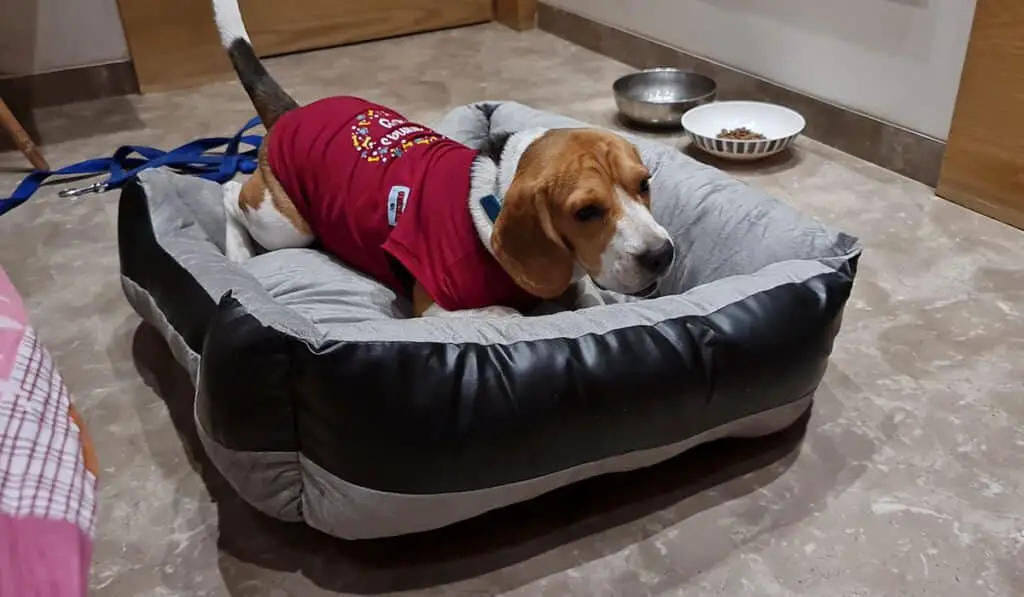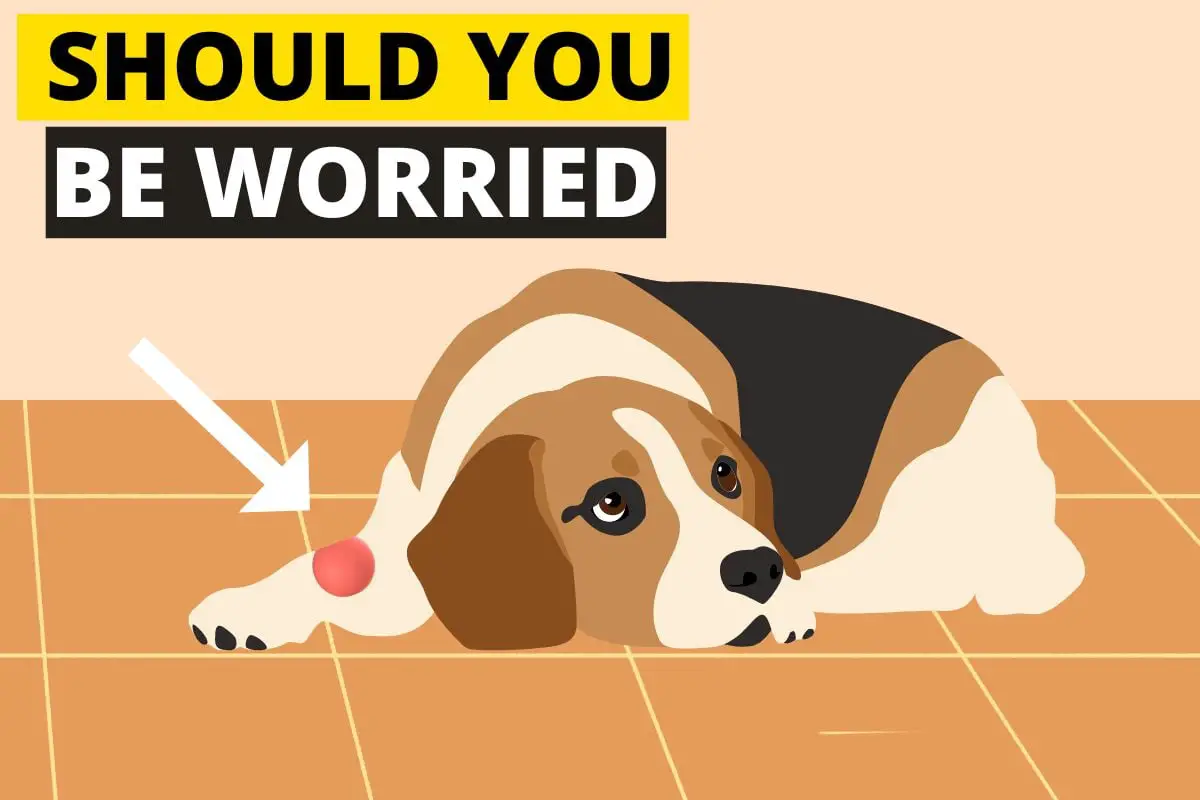You’re cuddling with your favorite beagle, and you notice a lump. You don’t remember the lump having been there before and so, naturally, you’re worried. Regardless of what you think you may have found, you do need to schedule a veterinary appointment and have your vet examine the lump.
When you do visit your vet, he or she will ask you to furnish some basic information such as:
- Is the lump recent and did it appear suddenly or gradually become more noticeable
- Has the shape, size, or color of the lump changed
- Is your beagle behaving differently? Has its appetite changed or has its energy level changed?
Regardless of where the lump is located, your vet will most likely aspirate some cells from your dog’s lump with a needle. These cells will be sent to a laboratory for analysis, to discover if it is a tumor and what is the nature of the growth.
If the cell analysis does not provide a definitive answer, your vet may decide to remove a piece of soft tissue surgically for a biopsy. Within days you will know if the lump is cancerous. Your vet may need to remove the lump entirely. Should the lump be cancer, the next step will be determining if it has spread to other parts of your pup’s body. Your vet may recommend radiation or chemotherapy.
Kinds of Lumps or Bumps

The most common lumps in Beagle breeds include:
Abscess
An abscess is a pus buildup underneath the skin. It can be the result of a bite by an insect or another animal, or an infection.
Fatty Tumors
This kind of lump is typical in middle-aged or senior dogs especially in the rib area, although they can appear just about anywhere. These are considered a result of aging. All dog breeds can develop them, but they are a bit more common in larger dogs.
Histiocytomas
These are benign abnormal immune cell growths in the skin. They are generally found in young pooches. Often, they are red with a bubbly surface. Dogs may chew them or bump them causing them to bleed. They can be removed.
Lipomas
Are benign tumors that are very common on pets and are just under the skin. They are generally mobile unless attached to muscle and are best left alone but should be monitored.
Malignant tumors
These tumors are numerous in type and location. They may include lymphoma, mammary tumors, squamous cell carcinomas, and osteosarcomas.
Mast Cell Tumor
This is malignant skin cancer found in canines. It is commonly found in Boston Terriers, Boxers, Labradors, Schnauzers, and …Beagles!
Sebaceous cyst
This cyst forms when an oil gland becomes obstructed. It will look like a pimple. Eventually, it will burst open, and a white pasty substance will emerge.
Skin tags or Cysts
These are generally benign unless they grow to be quite large. Skin tags can bleed, get caught, and be painful. Cysts normally contain a liquid substance so they may ooze. If they become uncomfortable, they can be removed
Warts
Warts develop from a virus and are often found around the mouth in younger canines. They will disappear eventually without treatment. When they appear in older dogs, they will most likely need to be removed.
Beagle Bumps and Lumps

If there’s a lump on your Beagle’s ear, know that ear tumor are not so uncommon and often are benign. One risk factor is long floppy ears and Beagles are a breed with this kind of ear. Some will not require any treatment at all. Your Vet may choose to treat the lump or remove it if it is causing your pup pain.
Often the appearance of soft fatty lumps on your Beagle’s side will prove to be harmless fatty tumors that do not cause any discomfort. Many vets will say not to worry about them unless they harden. They should, however, be kept under observation, and should you prefer, you can ask your vet to remove them.
Again, a lump on a Beagle’s back, just like a lump on a Beagle’s chest is often a fatty tumor or Lipoma. This type of tumor will not go away spontaneously. It can shrink with weight loss but will not disappear.
Beagles can be prone to developing various tumors and cysts, and even if many are benign and not problematic, they should be checked out and watched. Lumps that appear on your Beagle’s neck may be fatty tumors or sebaceous cysts that are commonly found on a Beagle’s neck, head, upper legs, or torso.
What to Do
Should you discover that the bump isn’t cancerous, you should keep an eye on it anyway to note any subsequent changes. Should your Beagle develop new bumps, you need to get those tested as well, and should your pooch have multiple lumps you might want to keep a chart of lump locations and sizes making it much simpler to track any changes.
The best time to check your Beagle out is when you are grooming. Take time to familiarize yourself with your pup’s body. This way, you’ll know if something is wrong. If you find bumps or lumps on your beloved Beagle, don’t waste time and consult your vet.

